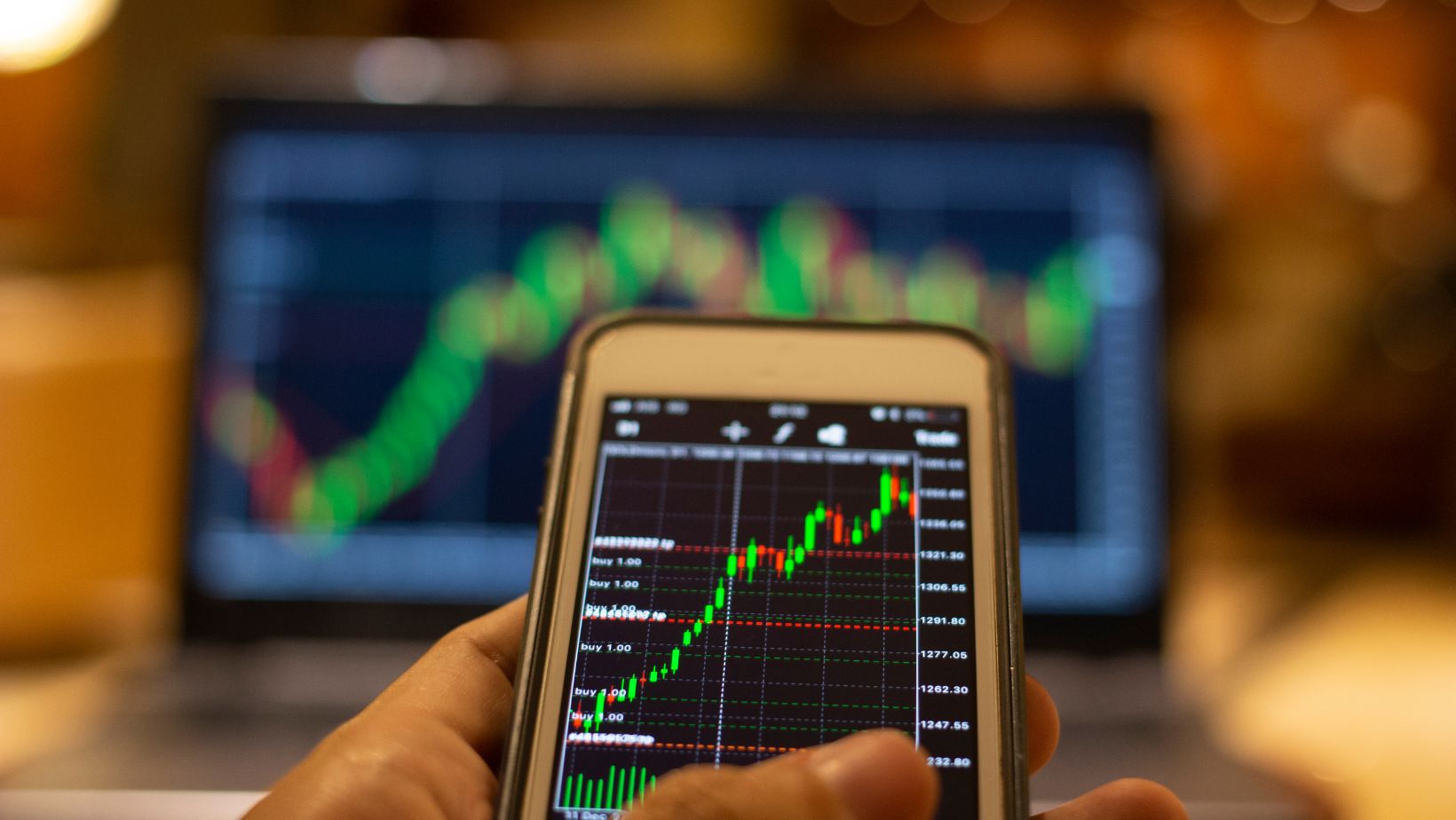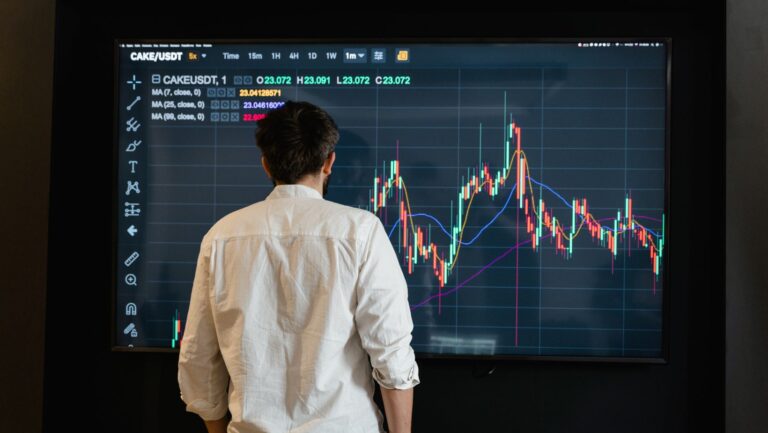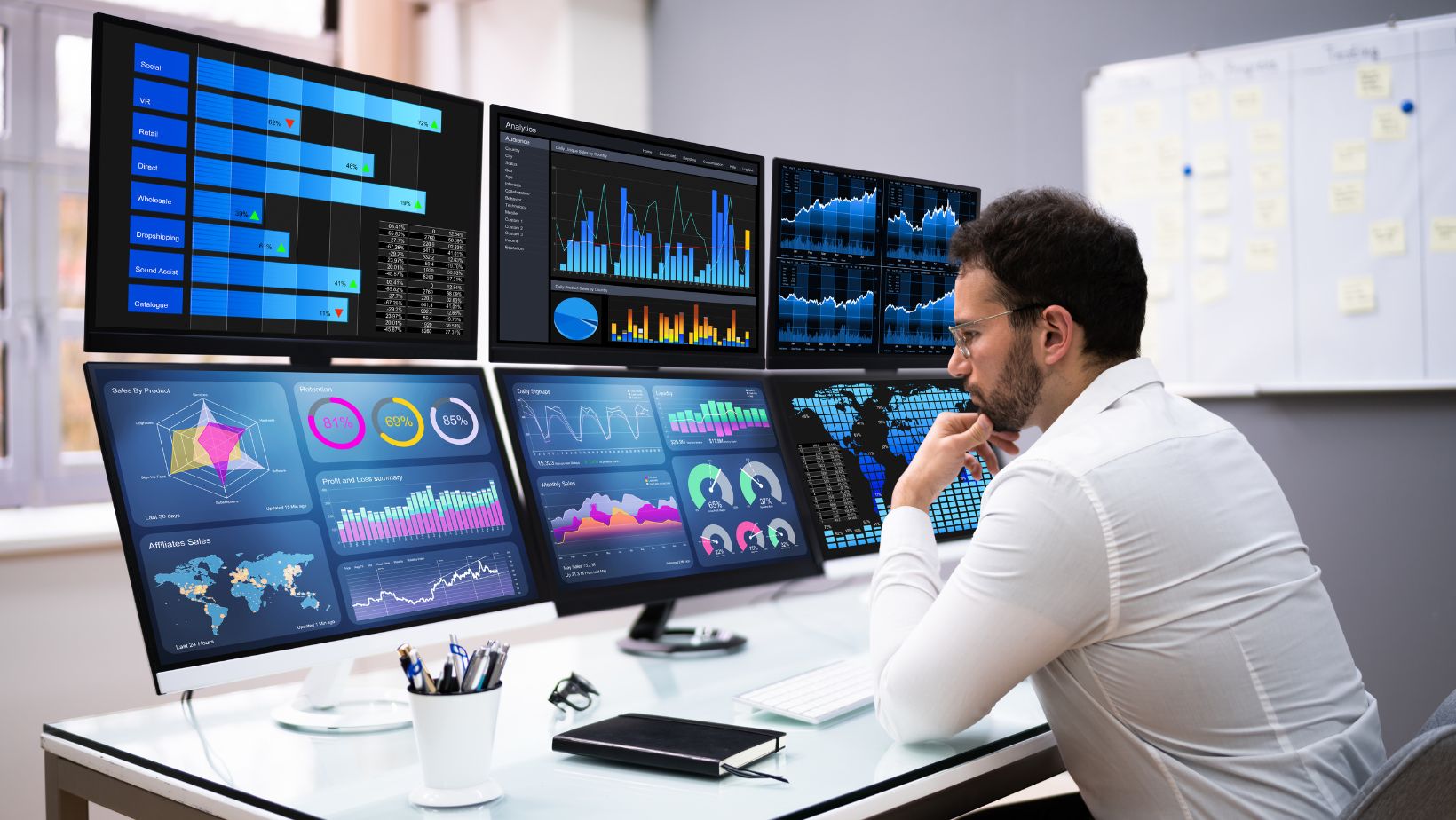Have you dreamed of joining the exciting world of forex trading? With a daily trading volume exceeding $6 trillion, the foreign exchange market offers incredible opportunities for those willing to learn the ropes. But becoming a successful forex trader requires more than just opening an account and placing random trades.
You’ll need a solid foundation of knowledge strategic planning and emotional discipline to navigate the forex market effectively. Whether you’re looking to trade part-time or make it your primary source of income understanding the essential steps will help set you up for success. From mastering technical analysis to developing a risk management strategy there’s a clear path to follow for aspiring forex traders who want to enter this dynamic market.
Understanding the Basics of Forex Trading
Forex trading operates through a global network of banks exchanging different currencies. The foreign exchange market consists of specific elements traders use to analyze opportunities make informed decisions.
Key Terminology and Concepts
The forex market uses specialized terms to describe trading activities:
- Pip: The smallest price move in exchange rates, typically the fourth decimal place (0.0001)
- Spread: The difference between the buying (ask) price selling (bid) price of a currency pair
- Leverage: A ratio (e.g., 1:100) that enables trading larger positions with a smaller capital investment
- Margin: The required collateral to open maintain a leveraged trading position
- Lot Size: A standardized trading unit (standard lot = 100,000 units of base currency)
- Stop Loss: An order to close a position at a specific price to limit potential losses
- Take Profit: An order that automatically closes a position when it reaches a target price
- Base Currency: The first currency in the pair (e.g., EUR in EUR/USD)
- Quote Currency: The second currency showing how much it takes to buy one unit of base currency
- Major Pairs: Currency combinations with USD (EUR/USD GBP/USD USD/JPY)
- Minor Pairs: Pairs between non-USD major currencies (EUR/GBP EUR/JPY)
- Exotic Pairs: Combinations of major currencies emerging market currencies (USD/TRY EUR/ZAR)
| Currency Pair Type | Example | Average Daily Spread |
| Major Pairs | EUR/USD | 0.1-1.0 pips |
| Minor Pairs | EUR/GBP | 1.5-3.0 pips |
| Exotic Pairs | USD/TRY | 3.0-10.0 pips |
Setting Up Your Trading Foundation
Establishing a solid trading foundation requires selecting a reputable broker and practicing with virtual funds before committing real capital. A systematic approach to setting up your trading infrastructure ensures a smoother transition into active trading.
Opening a Demo Trading Account
Demo accounts provide a risk-free environment to practice forex trading with virtual money. Leading forex brokers offer demo accounts loaded with $50,000 to $100,000 in virtual currency, allowing traders to:
- Execute live market trades without financial risk
- Test different trading strategies across multiple currency pairs
- Learn platform features including order types order execution
- Track trading performance through detailed analytics
- Practice risk management by setting stop-loss orders position sizes
Most demo accounts remain active for 30-90 days, providing sufficient time to develop trading competency before transitioning to live trading.
Choosing the Right Forex Broker
Selecting an appropriate forex broker involves evaluating several critical factors:
Regulatory Compliance
- Registration with tier-1 regulators (FCA, ASIC, CySEC)
- Segregated client funds in major banks
- Regular external audits transparency reports
Trading Costs
| Cost Component | Industry Average |
| EUR/USD Spread | 0.8-1.2 pips |
| Commission per lot | $5-7 |
| Minimum Deposit | $100-250 |
Platform Features
- Multiple trading platforms (MT4 MT5 proprietary)
- Advanced charting tools technical indicators
- Mobile trading capabilities
- Research analysis resources
- Educational materials trading guides
- 24/5 multilingual support
- Multiple contact channels (chat phone email)
- Fast response times
- Educational resources training materials
Compare at least 3 regulated brokers based on these criteria before making a final selection.
Developing a Trading Strategy
A profitable trading strategy combines technical analysis methods with fundamental analysis techniques to identify potential trading opportunities. Additionally, traders may also consider an automated trading system. Each trading approach requires specific tools and expertise to analyze market movements effectively. For example by using NYCServers Forex VPS service, traders are able to run their automated trading strategy around the clock.
Technical Analysis Methods
Technical analysis in forex trading relies on chart patterns price indicators to predict future currency movements. Here’s what to master:
- Chart Patterns: Identify common formations like head shoulders double tops triangles
- Moving Averages: Use 50-day 200-day EMAs to spot trends support levels
- RSI (Relative Strength Index): Monitor overbought oversold conditions between 0-100
- MACD (Moving Average Convergence Divergence): Track momentum shifts trend directions
- Fibonacci Retracement: Plot potential reversal levels at 23.6% 38.2% 61.8%
| Technical Indicator | Purpose | Common Settings |
| RSI | Momentum | 14-period |
| MACD | Trend Following | 12,26,9 |
| Bollinger Bands | Volatility | 20-period, 2 SD |
- Economic Calendar: Track GDP reports employment data interest rate decisions
- Central Bank Policies: Monitor monetary policy changes quantitative easing programs
- Inflation Rates: Compare CPI PPI data between currency pairs
- Political Events: Evaluate elections trade agreements policy changes
- Market Sentiment: Analyze COT reports institutional positioning retail sentiment
| Economic Indicator | Release Frequency | Impact Level |
| Interest Rates | 6-8 weeks | High |
| GDP | Quarterly | High |
| NFP Report | Monthly | High |
Managing Trading Risk
Risk management forms the foundation of successful forex trading by protecting your capital from significant losses.
Position Sizing Rules
Position sizing determines the number of currency units to trade based on your account balance. Calculate position sizes using the 1% rule: risk no more than 1% of your total trading capital on a single trade. Here’s how to implement effective position sizing:
- Use a position size calculator to determine lot sizes
- Adjust positions based on account currency denomination
- Scale position sizes proportionally to account growth
- Match position sizes to market volatility conditions
| Account Size | Max Risk (1%) | Standard Lot Value | Micro Lot Value |
| $10,000 | $100 | $100,000 | $1,000 |
| $25,000 | $250 | $250,000 | $2,500 |
| $50,000 | $500 | $500,000 | $5,000 |
- Set stops beyond support resistance levels
- Calculate stops using Average True Range (ATR)
- Position stops at swing highs or lows
- Maintain minimum 1:2 risk-reward ratios
| Stop-Loss Type | Placement Method | Risk Management Benefit |
| Fixed | Pips from entry | Consistent risk size |
| Trailing | Moves with price | Locks in profits |
| Volatility | ATR multiplier | Adapts to conditions |
| Time-based | Specific duration | Limits exposure time |
Creating Your Trading Plan
A trading plan establishes clear guidelines for entering trading opportunities aligning with your strategy while managing risk effectively. Your plan defines specific rules for market engagement removing emotional decision-making from the trading process.
Entry and Exit Rules
Entry rules identify optimal market conditions for opening positions based on your strategy’s technical indicators:
- Enter long trades when price breaks above key resistance levels with confirmation from 2-3 indicators like RSI MACD
- Take short positions at bearish divergence points showing overbought conditions on multiple timeframes
- Set specific profit targets at major support resistance zones using Fibonacci levels
- Place stop losses 10-15 pips below recent swing lows for long trades
- Exit trades when price action violates your entry criteria or technical indicators reverse
- Dedicate 30 minutes each evening to analyze daily charts identifying potential setups
- Focus trading activities during major market sessions: London (3am-12pm EST) New York (8am-5pm EST)
- Set specific hours for monitoring open positions based on your strategy’s timeframe
- Schedule 2 hours weekly for reviewing trade performance analyzing mistakes
- Use price alerts notifications to avoid constant chart watching
- Create a trading calendar marking key economic events earnings releases
- Allocate time blocks for education staying updated with market developments
Building Good Trading Habits
Good trading habits form the foundation of consistent forex trading performance. These habits create a structured approach to analyzing markets making informed decisions.
Maintaining a Trading Journal
A trading journal documents every trade’s entry points exit levels setups market conditions. Record specific details for each trade:
- Write detailed entry reasons including technical indicators fundamental factors
- Document position sizes stop-loss levels take-profit targets
- Track emotional states before during after trades
- Log market conditions like volatility trends news events
- Calculate risk-reward ratios win rates profit/loss metrics
- Add screenshots of trade setups chart patterns
| Journal Component | Details to Record |
| Trade Setup | Entry price, position size, direction |
| Risk Management | Stop loss, take profit, R:R ratio |
| Analysis | Technical indicators, chart patterns |
| Performance | P/L, win rate, average win/loss |
- Follow preset trading rules regardless of previous trade outcomes
- Stick to position sizing limits even during winning streaks
- Take regular breaks after executing trades to maintain objectivity
- Remove yourself from trading during heightened emotional states
- Focus on process-oriented goals instead of profit targets
- Monitor physical signs of emotional trading like increased heart rate sweating
- Use meditation breathing exercises before trading sessions
| Emotional Trigger | Management Strategy |
| Trading Losses | Review journal, stick to plan |
| FOMO | Check trade setup against criteria |
| Revenge Trading | Step away, reset mentally |
| Overconfidence | Review risk parameters |
Transitioning to Live Trading
Live forex trading marks the shift from practice to real market engagement with actual capital at stake. This transition phase requires a methodical approach to protect capital while gaining practical experience.
Starting With Small Positions
Starting with micro-lots minimizes financial exposure during the initial trading phase. A micro-lot equals 1,000 units of the base currency, allowing trades with minimal capital requirements as low as $10-$20 per position. Here’s how to implement small position trading:
- Trade 0.01 lots (micro) for the first 20-30 live trades
- Limit total account risk to 0.5% per trade during the first month
- Monitor trade execution quality through spreads slippage
- Document fill prices compared to demo account experiences
| Trading Period | Position Size | Required Win Rate |
| Month 1-2 | 0.01 lots | 40%+ |
| Month 3-4 | 0.03 lots | 50%+ |
| Month 5-6 | 0.05 lots | 55%+ |
| Month 7+ | 0.10 lots | 60%+ |
- Increase position sizes after achieving 3 consecutive profitable months
- Add 0.02 lots to position size when win rate exceeds target
- Track risk-adjusted returns using Sharpe ratio metrics
- Maintain consistent risk percentage despite larger positions
Conclusion
Becoming a successful forex trader is a journey that requires dedication commitment and continuous learning. By following these steps you’ll build a strong foundation in forex trading while developing the skills needed to navigate the markets effectively.
Remember that profitability in forex trading doesn’t happen overnight. Focus on mastering one concept at a time implementing proper risk management and maintaining emotional discipline. Your success depends on treating forex trading as a business rather than a get-rich-quick scheme.

Take your time to practice with a demo account perfect your strategy and only move to live trading when you’re consistently profitable. Stay patient stay focused and keep learning from both your successes and failures.





